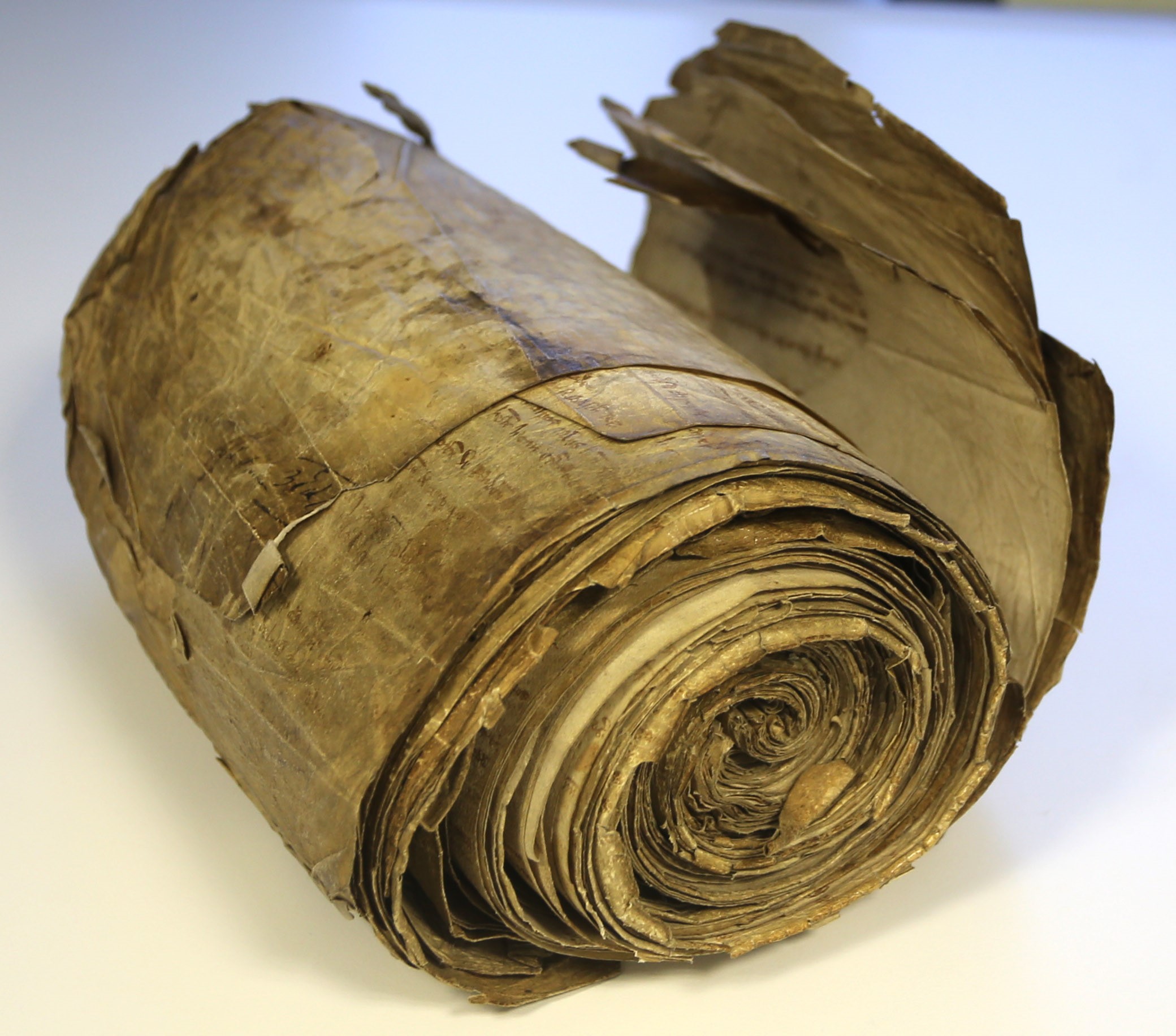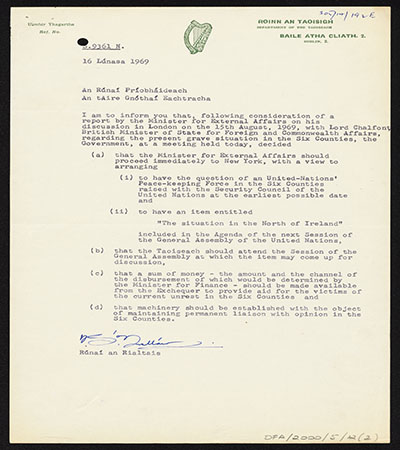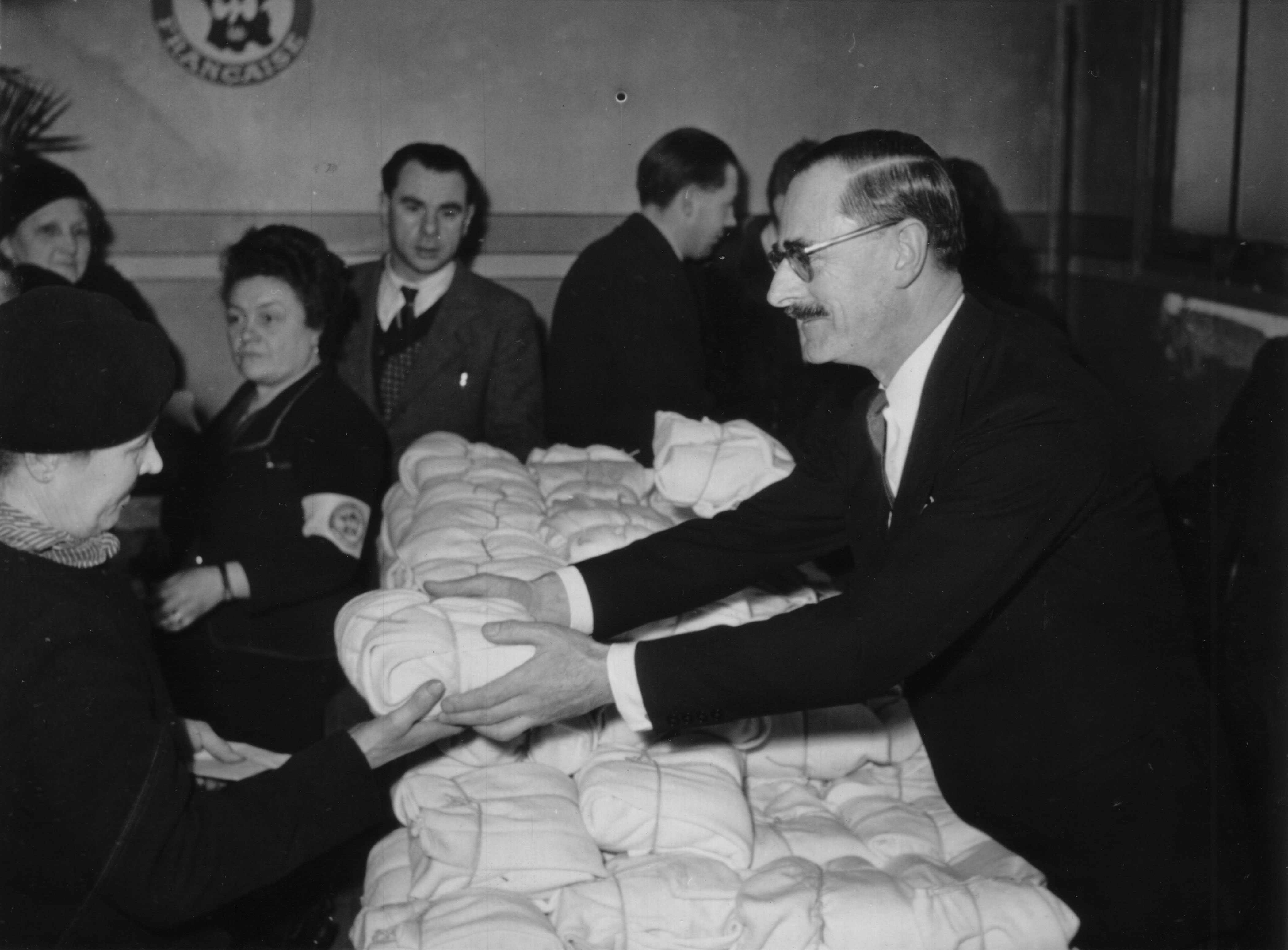Doiciméad na Míosa do Meitheamh
Ireland and D-Day
It was no secret in the months leading up to the Normandy Landings on D-Day, 6 June 1944, that the Allies were poised to mount operations to liberate occupied Europe from Nazi control. The question was when and where the Allied expeditionary force would land.
The Allies feared the leaking of plans for ‘Operation Overlord’ via neutral Ireland. Co-operation between Irish, British and United States military intelligence and diplomats ensured that Ireland was in effect ‘locked down’ with Irish agreement, so far as transport and communications were concerned in the weeks leading up to 6 June 1944.
Yet neutral Ireland was also to have an intrinsic role in D-Day. It was on receipt of a coded weather forecast from Blacksod weather station on the Mullet Peninsula in county Mayo that the Supreme Commander of Operation Overlord, US General Dwight D Eisenhower, gave the go-ahead for the liberation of Europe to commence.
Classified for many years, it finally became public in the 1980s that this report, which forecast a brief period of good weather during which landings could take place, was sent as part of neutral Ireland’s covert wartime co-operation with the Allies. German meteorologists later admitted they had not forecast this brief clear spell.
Memorandum from the Secretary General of the Department of External Affairs to Taoiseach and Minister for External Affairs Éamon de Valera regarding censored wartime communications, 15 April 1944
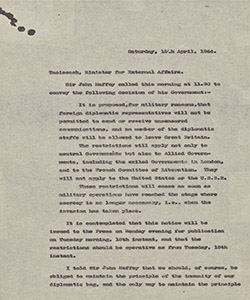
The secrecy surrounding planning for the Allied invasion of occupied Europe saw close and intricate co-operation between Irish, British and US services and diplomats. Irish Military Intelligence (G2) and senior officials in the Department of External Affairs worked with their Allied counterparts to ensure that information on Operation Overlord did not escape into Axis channels via Ireland
In this memorandum, the Secretary General of the Department of External Affairs Joseph P Walshe informs Taoiseach and Minister for External Affairs Éamon de Valera that Irish diplomats in London will be unable to send or receive uncensored communication as and from 18 April 1944. He also indicates how he and the British Diplomatic Representative to Ireland Sir John Maffey proposed to overcome the new restrictions.
See here for complete document.
Telegram from Irish diplomat in Vichy to the Secretary General of the Department of External Affairs regarding local conditions in the aftermath of D-Day, 8 June 1944
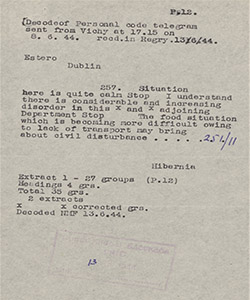
Personal code telegram from Seán Murphy in Vichy to the Secretary General of the Department of External Affairs Joseph P Walshe. Murphy reports that in the aftermath of the Allied landings in Normandy, conditions were increasingly disorderly in the Allier department in which Vichy is located and in neighbouring departments. He also reports that food supplies were becoming problematic. Indicative of the state of communications in France and between the continent and Ireland in the aftermath of D-Day, the telegram took five days to reach Dublin.
See here for full document.
Telegram from the Irish Chargé d’Affaires in Berlin to the Department of External Affairs regarding the progress of the war for Germany in the aftermath of D-Day, 8 July 1944
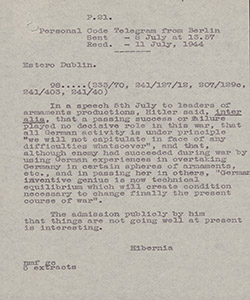
Personal code telegram from Chargé d’Affaires Con Cremin at the Irish Legation in Berlin, to the Department of External Affairs, Iveagh House, Dublin. Aware that his codes had been broken by both Allied and Axis intelligence agencies, Cremin communicates in unexceptional language that in the aftermath of D-Day, Hitler was aware that the war was not going well for Germany. The telegram also hints at the arrival of further German V-weapons (‘Vergeltungswaffen’/‘Retaliatory Weapons’), in particular the V-2 ballistic missile, following the deployment of the V-1 ‘flying bomb’ in the aftermath of D-Day.
See here for full document.
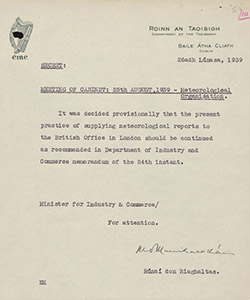
The Allied landings in Normandy on D-Day, 6 June 1945, had a top-secret Irish dimension. The supreme commander of the Allied Expeditionary Forces in Europe, General Dwight D Eisenhower gave the orders to commence Operation Overlord and the Allied liberation of Nazi-occupied Europe based on a weather report sent by Maura and Ted Sweeney from Blacksod Bay weather station in county Mayo.
The Irish Meteorological Service had seen a clear period coming in from the Atlantic during which the amphibious assault could be launched with air cover. Eisenhower accordingly moved the date of D-Day from 5 to 6 June 1944. The continued exchange of weather information had been agreed by the Dublin and London governments in the run up to the outbreak of the Second World War. Taoiseach and Minister for External Affairs Éamon de Valera concluded that such exchanges did not contravene Ireland’s neutrality in the Second World War.
See here for full document.




